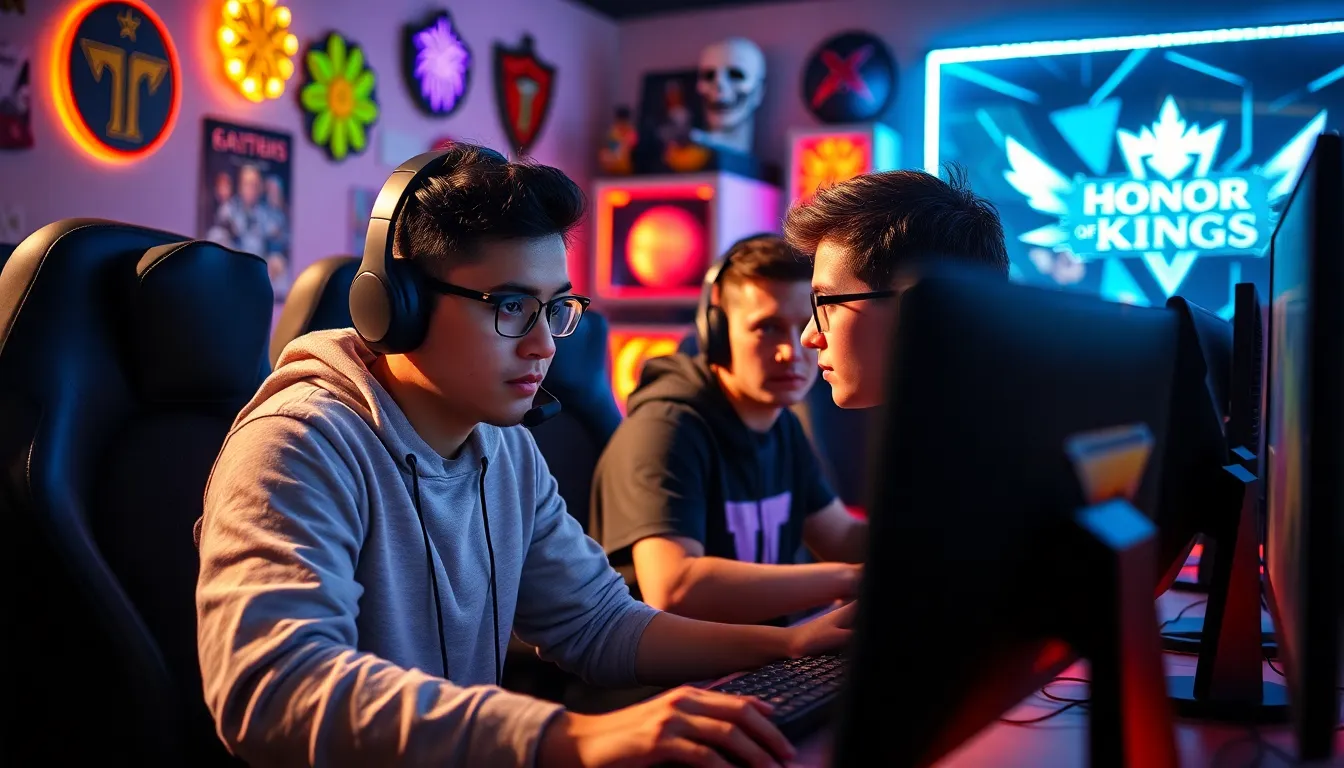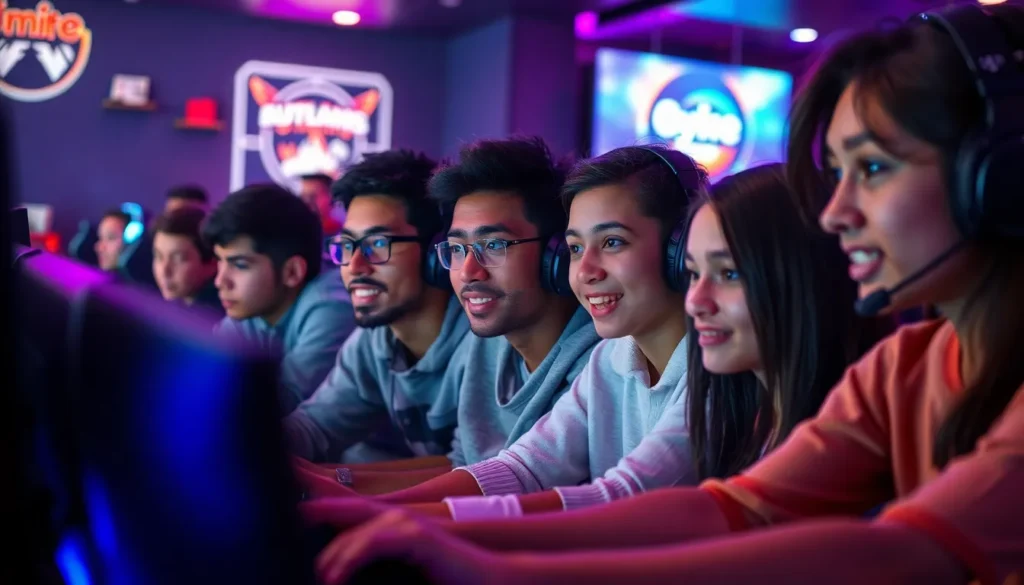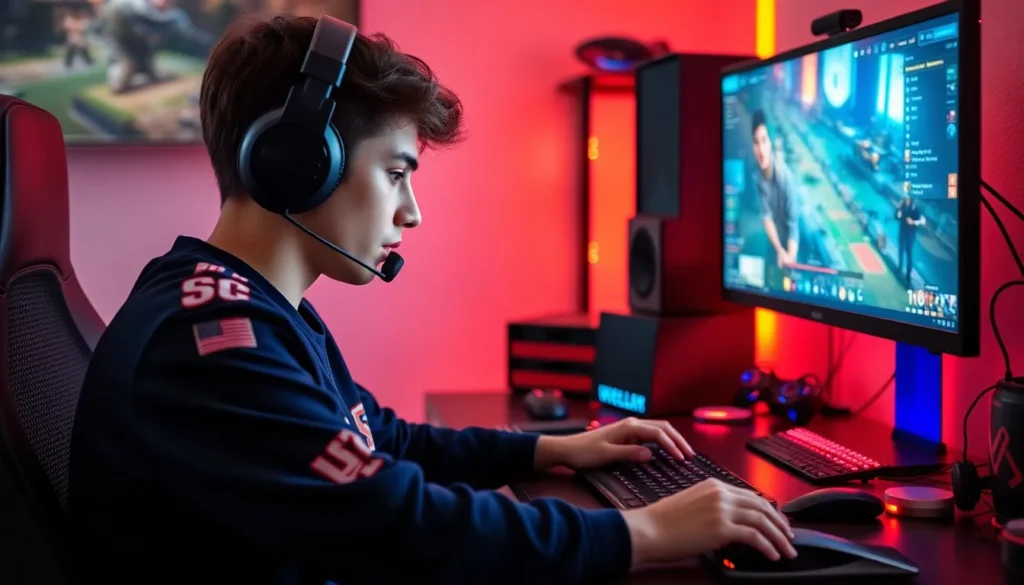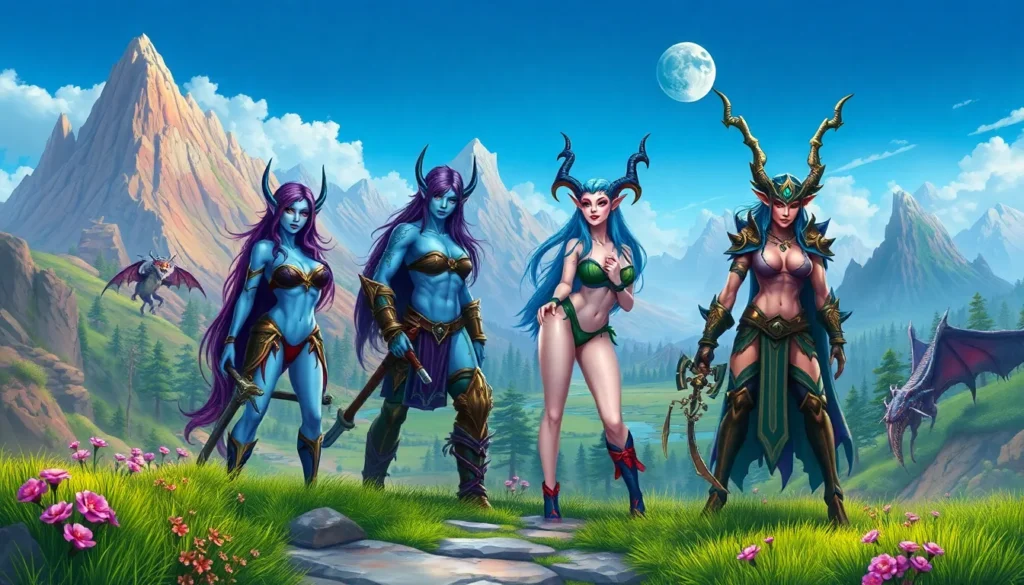In the fast-paced world of Honor of Kings, positioning can make or break a teamfight. Imagine diving headfirst into battle without a plan—it’s like trying to juggle flaming swords while riding a unicycle. Not exactly the best strategy, right? Mastering your positioning not only keeps you alive but also maximizes your team’s potential to unleash chaos on the enemy.
Table of Contents
ToggleUnderstanding Teamfight Positioning in Honor of Kings
Positioning plays a vital role in teamfights within Honor of Kings. Effective positioning can often determine the outcome of battles. Players must understand their champions’ strengths and weaknesses to achieve optimal placement.
Frontline and backline differentiation influences positioning choices. Tanks and bruisers should occupy the frontline, absorbing damage while disrupting enemies. Assassins and ranged damage dealers thrive in the backline, dealing optimal damage while remaining safe.
Utilizing terrain benefits movement and positioning strategies. Players can leverage obstacles to shield themselves from enemy attacks. High ground positions often provide a strategic advantage, allowing for superior sightlines and escape paths.
Communication among teammates enhances positioning efforts. Coordinated movements and signals can facilitate quick adjustments during engagements. Prioritizing formation within the team ensures that everyone knows their roles and adapts efficiently.
Timing is crucial for effective positioning during teamfights. Engaging too early or late can lead to unfavorable scenarios. Players should remain aware of cooldowns and adjacent threats to inform their position changes.
Backtracking after a disengagement maintains safety. Players should retreat to safer areas while waiting for cooldowns to refresh. During this time, strategizing about the next move helps regroup and collect objectives.
Ultimately, consistent practice and analysis of teamfight scenarios elevate positioning skills. Reviewing past battles provides insight into positioning mistakes. Learning from experiences cultivates improved decision-making during future engagements.
Importance of Proper Positioning

Effective positioning in Honor of Kings plays a pivotal role in the outcome of teamfights. Players who prioritize placement can transform battles from chaotic encounters into calculated strategies.
Strategic Advantages
Positioning offers significant strategic benefits during engagements. Tanks and bruisers at the frontline absorb damage, protecting damage dealers who reside in the backline. Understanding terrain contributes to these advantages; utilizing high ground can provide vision and safety. Favorable positioning can also create opportunities for ambushes or flanking maneuvers, allowing teams to exploit openings in enemy defenses. Employing crowd control abilities while maintaining distance amplifies damage output and provides critical support to teammates. Coordinated movements among team members enhance opportunities to capitalize on enemy positioning, solidifying team advantages in skirmishes.
Risk Management
Managing risks effectively through proper positioning minimizes vulnerabilities. Recognizing the potential threats from enemy champions prevents unnecessary damage to teammates. Staying vigilant regarding cooldowns and enemy movements enables players to adapt quickly and avoid being caught out of position. Knowing when to engage or retreat can reduce casualties during skirmishes. A well-executed reposition allows for regrouping or disengaging to safe zones after an unfavorable encounter. Communicating intentions with the team fosters a cohesive strategy that mitigates risks while maximizing the potential for successful engagements. Prioritizing risk management ensures teams maintain a solid footing in battles.
Key Positioning Roles in Teamfights
Effective positioning roles play a pivotal part in winning teamfights in Honor of Kings. Each role contributes uniquely to the team’s overall strategy.
Frontline Champions
Frontline champions serve as the first line of defense in battles. Tanks and bruisers take the brunt of the damage, allowing their teammates to operate safely. They create space by soaking up enemy attacks, while also disrupting enemy formations. Champions such as Zhao or Gongsun Li excel in this position, ensuring their allies can deal damage without fear. Patience is crucial; waiting for the right moment to engage or peel back can shift the battle’s momentum.
Backline Damage Dealers
Backline damage dealers focus on inflicting high damage safely from a distance. Ranged champions such as Li Xin or Guojian thrive here, positioned behind frontline allies. They capitalize on the chaos created by their teammates, targeting vulnerable opponents. Maintaining awareness of positioning is vital; getting caught in the frontlines can lead to quick elimination. Keeping an eye on cooldowns and communicating effectively with the team enhances their damage output.
Support Characters
Support characters enhance their team’s survivability and effectiveness through strategic positioning. These champions provide healing, shielding, or crowd control abilities. For instance, characters like Zhuge Liang or Mozi excel at protecting teammates while maintaining a safe distance. They often linger behind frontline champions, ready to assist when needed. Awareness of teammates’ health and enemy threats shapes their engagement decisions. Communication about ability usage ensures the team maximizes their potential during fights.
Best Practices for Effective Positioning
Effective positioning involves strategic coordination and awareness. Players can optimize their chances of victory by following certain best practices.
Communication with Teammates
Effective communication enhances teamwork during engagements. Sharing information about cooldowns and enemy positioning allows teammates to synchronize their actions. Signals or pings provide crucial alerts, assisting in forming cohesive strategies. Quick adjustments become easier when players maintain open dialogue. Prioritizing clarity in communication helps avoid missteps in high-pressure situations. Recognizing when to initiate a fight or retreat becomes simpler with clear exchanges. Frequent interaction fosters trust, enabling each member to act confidently. Overall, a unified team significantly improves positioning effectiveness.
Adapting to Enemy Composition
Adapting to the enemy’s team composition proves essential in securing an advantage. Players should evaluate enemy champions’ abilities, strengths, and weaknesses to determine their positioning. Understanding whether to target squishy damage dealers or tanky frontline characters influences strategic choices. Assessing the enemy’s crowd control can guide players in maintaining safe distances. Adjustments during the match may involve altering roles based on perceived threats. Forming a plan around enemy movements enables players to capitalize on openings. Positioning effectively against specific champions heightens success rates in teamfights. Prioritizing adaptability facilitates improved overall team performance.
Mastering positioning in Honor of Kings is vital for achieving victory in teamfights. Players who understand the dynamics of their champions and their roles can navigate battles more effectively. By prioritizing strategic placement and leveraging terrain advantages, teams can create opportunities for decisive engagements.
Effective communication and awareness of both allies and enemies enable quick adaptations during skirmishes. Recognizing when to engage or retreat can significantly alter the course of a match. With consistent practice and a focus on improving positioning skills, players can enhance their decision-making and overall performance in future encounters. Embracing these principles will lead to more successful teamfights and a greater chance of triumph in the game.




